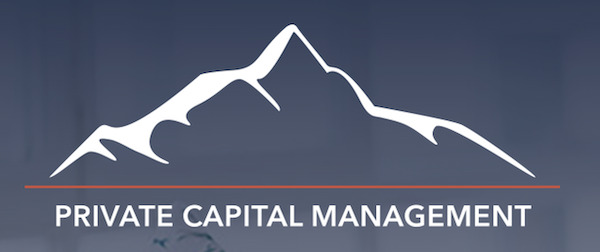
There are several different types of financial advisors. There are many types of financial advisors. These include hourly planners, fee-based advisors and fiduciary advisors. It is important to understand the differences in these advisors so that you can choose the right type for your needs. Fee-based financial advisors generally focus on long-term relationships with clients and a high level of customer service. While they are open to collaboration and seeking referral business, this is not always the case. This can result in poor retention rates, as clients leave banking institutions to buy similar products elsewhere.
Fee-based advisors
Fee-based financial advisors are paid a retainer or hourly rate for their services. Fee-based advisors offer advice and review of your portfolio, which is not possible with commission-based advisors. Fee-based advisors have to be able to meet your financial goals and needs. This means they can't try to sell you something that doesn't fit your needs.
Fee-based advisors could be paid from client fees or commissions for selling securities. Additionally, large wirehouses often offer fee-based advisors additional financial incentives for promoting their proprietary products. This can lead to conflicts of interests.

Advisors who charge a fee
High-net-worth clients often choose fee-only advisors. However, their qualifications are not diminished. Before hiring an advisor they should do their research. Clients must also take into account their financial goals and situation. Different advisors can be used for different situations.
Fee-only advisors are also more expensive than their commission-compensated counterparts. Fees for these advisors typically amount to 1% to 2 percent of assets under management. This can impact returns. The fee can be small but it can add up quickly to a large chunk of the client’s return.
Hourly planners
Hourly planners offer basic financial advice and can also provide investment advice. They don't manage clients' investments nor provide ongoing monitoring. They typically review the client's investments, budgeting, and tax returns. Some hourly planners also offer complete financial plans for a flat project-based fee. These professionals may not be the best fit for all consumers.
An hourly financial advisor is much more affordable than commissions. A 15-hour engagement, at $300 an hour, would cost around $4,500. Because some clients only require financial guidance a few times each year, hourly planning could be a very cost-effective option.

Fiduciary advisors
Fiduciary financial advisors have a duty towards you to invest in your financial best interest. This type of advisor is best because they are free from conflicts of interest. An estimated $17 billion in hidden fees and conflicted advise each year costs investors. These fees, as well as backdoor payments, can consume 1% of your annual returns. This money can be saved by consulting a fiduciary Financial Advisor, and you could keep more for retirement.
The fee structure for fiduciary advisors is different to other financial advisors. They typically charge a percentage of the account's value but they may also charge an hourly flat fee. In addition to that, they must disclose conflicts of interest to you and manage them accordingly.
FAQ
How old do I have to start wealth-management?
Wealth Management is best when you're young enough to reap the benefits of your labor, but not too old to lose touch with reality.
The sooner you invest, the more money that you will make throughout your life.
You may also want to consider starting early if you plan to have children.
Savings can be a burden if you wait until later in your life.
Who Can Help Me With My Retirement Planning?
Many people find retirement planning a daunting financial task. This is not only about saving money for yourself, but also making sure you have enough money to support your family through your entire life.
When deciding how much you want to save, the most important thing to remember is that there are many ways to calculate this amount depending on your life stage.
If you're married, for example, you need to consider your joint savings, as well as your personal spending needs. If you're single you might want to consider how much you spend on yourself each monthly and use that number to determine how much you should save.
You could set up a regular, monthly contribution to your pension plan if you're currently employed. If you are looking for long-term growth, consider investing in shares or any other investments.
Get more information by contacting a wealth management professional or financial advisor.
Who Should Use a Wealth Management System?
Anyone looking to build wealth should be able to recognize the risks.
New investors might not grasp the concept of risk. They could lose their investment money if they make poor choices.
Even those who have already been wealthy, the same applies. Some may believe they have enough money that will last them a lifetime. However, this is not always the case and they can lose everything if you aren't careful.
Therefore, each person should consider their individual circumstances when deciding whether they want to use a wealth manger.
How to Select an Investment Advisor
Choosing an investment advisor is similar to selecting a financial planner. Consider experience and fees.
This refers to the experience of the advisor over the years.
Fees represent the cost of the service. These fees should be compared with the potential returns.
It is essential to find an advisor who will listen and tailor a package for your unique situation.
Statistics
- According to a 2017 study, the average rate of return for real estate over a roughly 150-year period was around eight percent. (fortunebuilders.com)
- As of 2020, it is estimated that the wealth management industry had an AUM of upwards of $112 trillion globally. (investopedia.com)
- If you are working with a private firm owned by an advisor, any advisory fees (generally around 1%) would go to the advisor. (nerdwallet.com)
- A recent survey of financial advisors finds the median advisory fee (up to $1 million AUM) is just around 1%.1 (investopedia.com)
External Links
How To
How to Invest Your Savings To Make More Money
You can earn returns on your capital by investing your savings into various types of investments like stock market, mutual fund, bonds, bonds, real property, commodities, gold and other assets. This is called investment. It is important to understand that investing does not guarantee a profit but rather increases the chances of earning profits. There are many ways you can invest your savings. You can invest your savings in stocks, mutual funds, gold, commodities, real estate, bonds, stock, ETFs, or other exchange traded funds. These methods are described below:
Stock Market
The stock market allows you to buy shares from companies whose products and/or services you would not otherwise purchase. This is one of most popular ways to save money. You can also diversify your portfolio and protect yourself against financial loss by buying stocks. If the price of oil falls dramatically, your shares can be sold and bought shares in another company.
Mutual Fund
A mutual fund is an investment pool that has money from many people or institutions. They are professionally managed pools, which can be either equity, hybrid, or debt. Its board of directors usually determines the investment objectives of a mutual fund.
Gold
The long-term value of gold has been demonstrated to be stable and it is often considered an economic safety net during times of uncertainty. It is also used in certain countries to make currency. The increased demand for gold from investors who want to protect themselves from inflation has caused the prices of gold to rise significantly over recent years. The supply/demand fundamentals of gold determine whether the price will rise or fall.
Real Estate
Real estate can be defined as land or buildings. When you buy real estate, you own the property and all rights associated with ownership. To generate additional income, you may rent out a part of your house. You can use your home as collateral for loan applications. The home may also be used to obtain tax benefits. Before buying any type property, it is important to consider the following things: location, condition and age.
Commodity
Commodities refer to raw materials like metals and grains as well as agricultural products. As commodities increase in value, commodity-related investment opportunities also become more attractive. Investors who want the opportunity to profit from this trend should learn how to analyze charts, graphs, identify trends, determine the best entry points for their portfolios, and to interpret charts and graphs.
Bonds
BONDS ARE LOANS between governments and corporations. A bond is a loan in which both the principal and interest are repaid at a specific date. The interest rate drops and bond prices go up, while vice versa. Investors buy bonds to earn interest and then wait for the borrower repay the principal.
Stocks
STOCKS INVOLVE SHARES of ownership within a corporation. A share represents a fractional ownership of a business. If you have 100 shares of XYZ Corp. you are a shareholder and can vote on company matters. Dividends are also paid out to shareholders when the company makes profits. Dividends, which are cash distributions to shareholders, are cash dividends.
ETFs
An Exchange Traded Fund or ETF is a security, which tracks an index that includes stocks, bonds and currencies as well as commodities and other asset types. ETFs can trade on public exchanges just like stock, unlike traditional mutual funds. The iShares Core S&P 500 eTF, NYSEARCA SPY, is designed to follow the performance Standard & Poor's 500 Index. This means that if SPY is purchased, your portfolio will reflect the S&P 500 performance.
Venture Capital
Venture capital refers to private funding venture capitalists offer entrepreneurs to help start new businesses. Venture capitalists can provide funding for startups that have very little revenue or are at risk of going bankrupt. Venture capitalists invest in startups at the early stages of their development, which is often when they are just starting to make a profit.